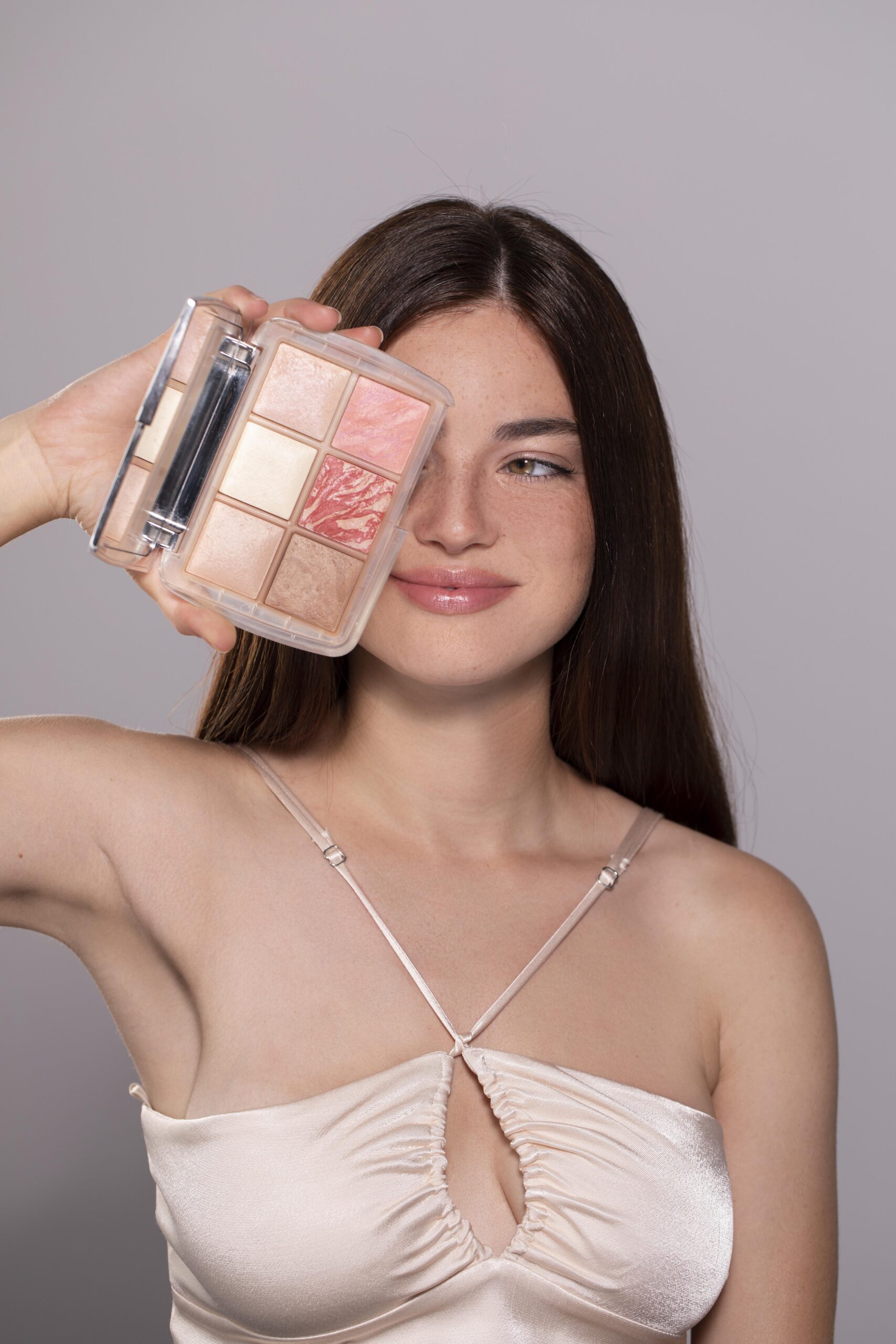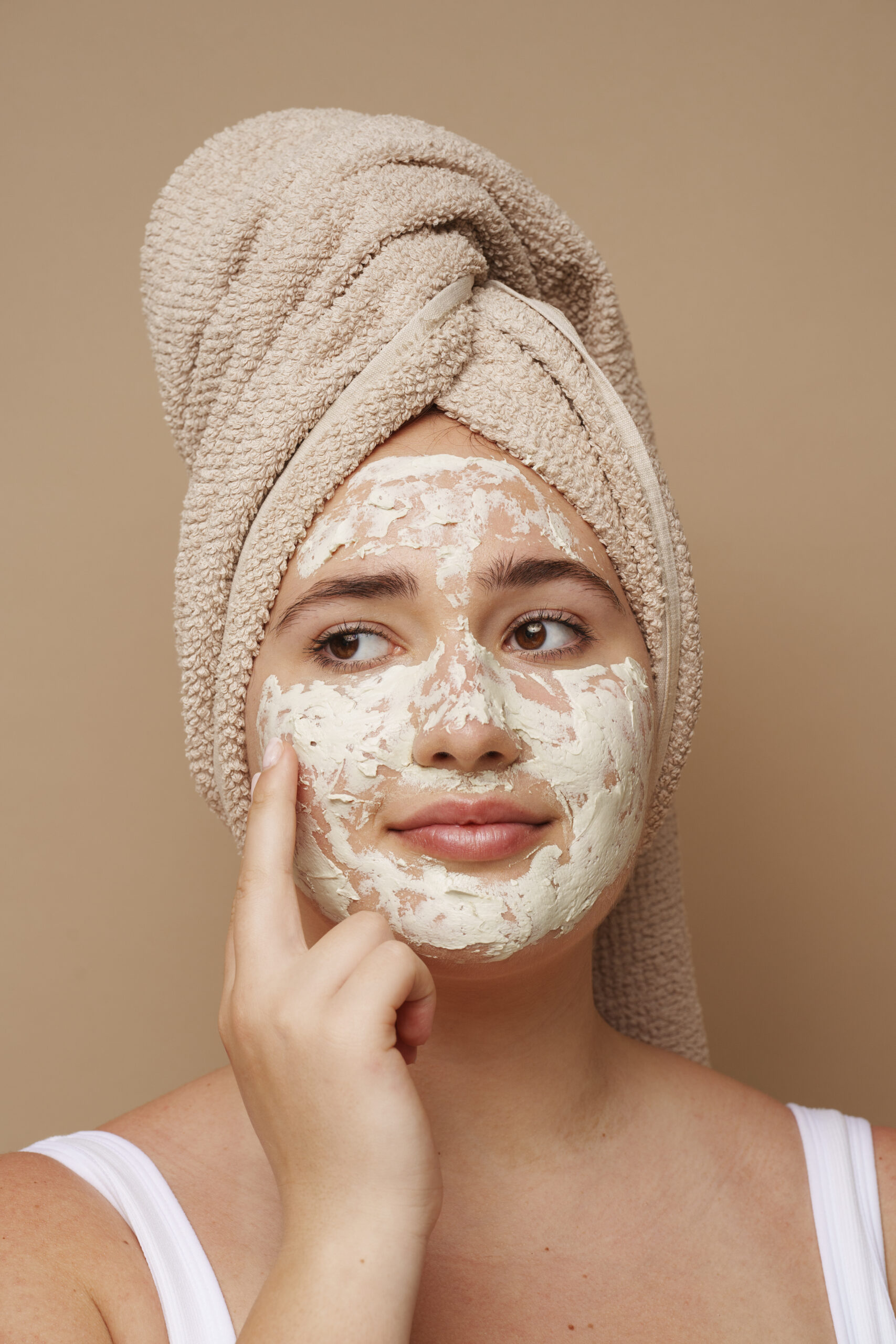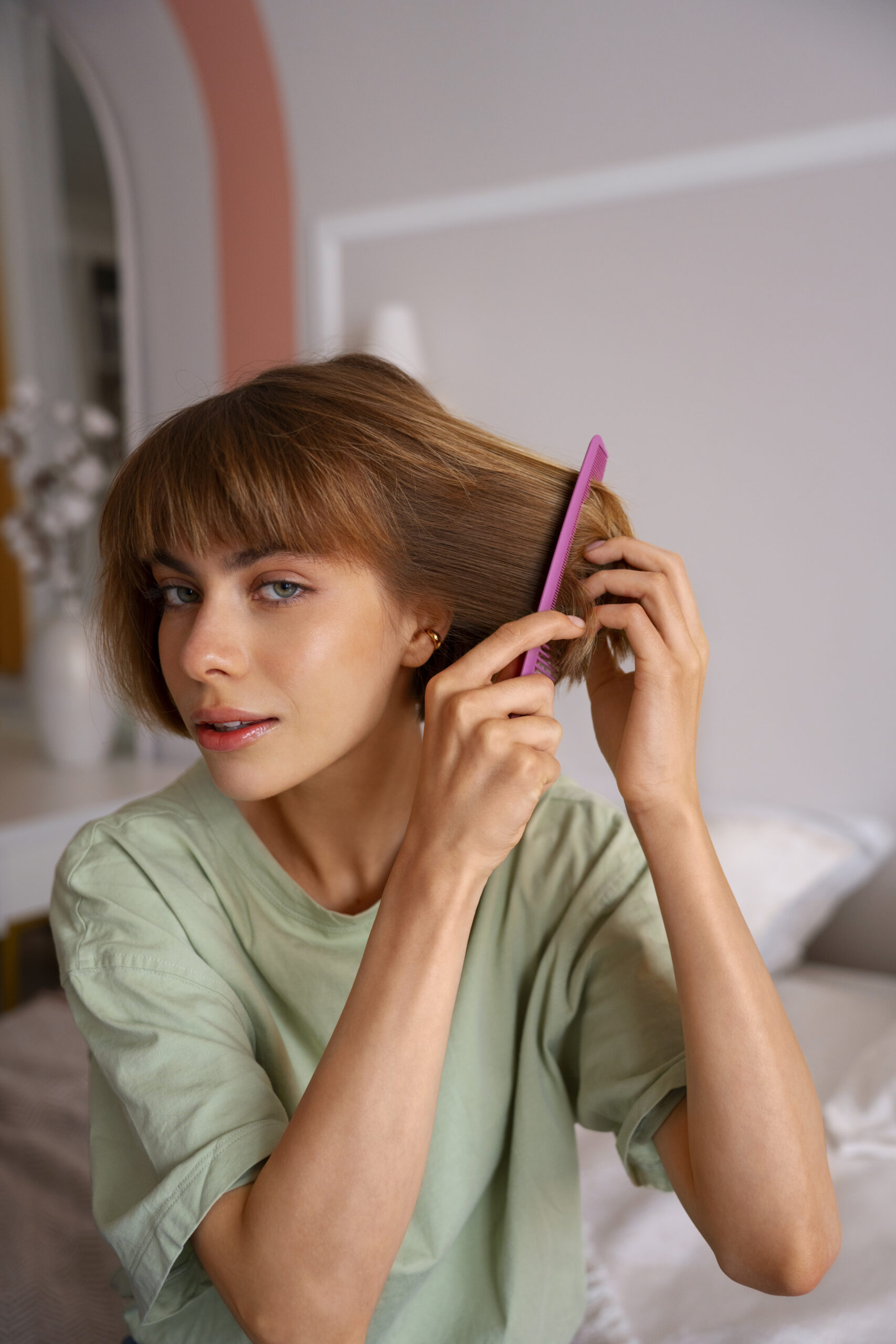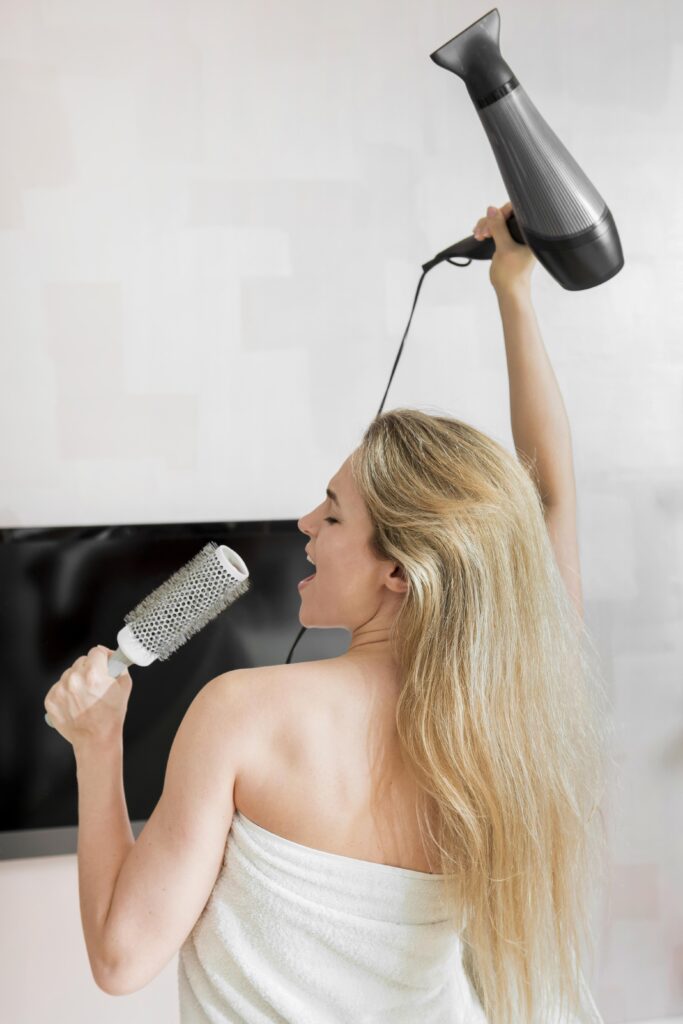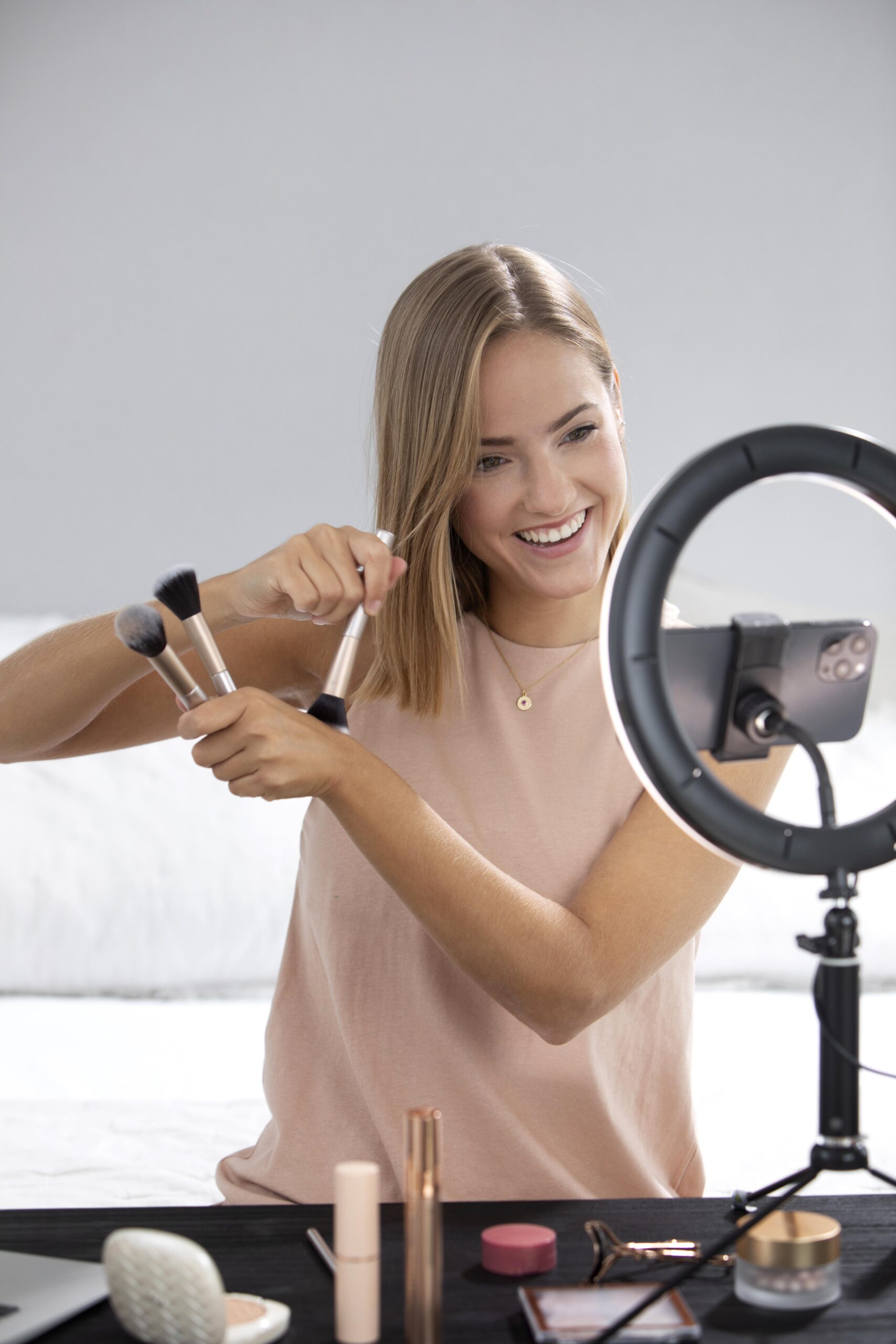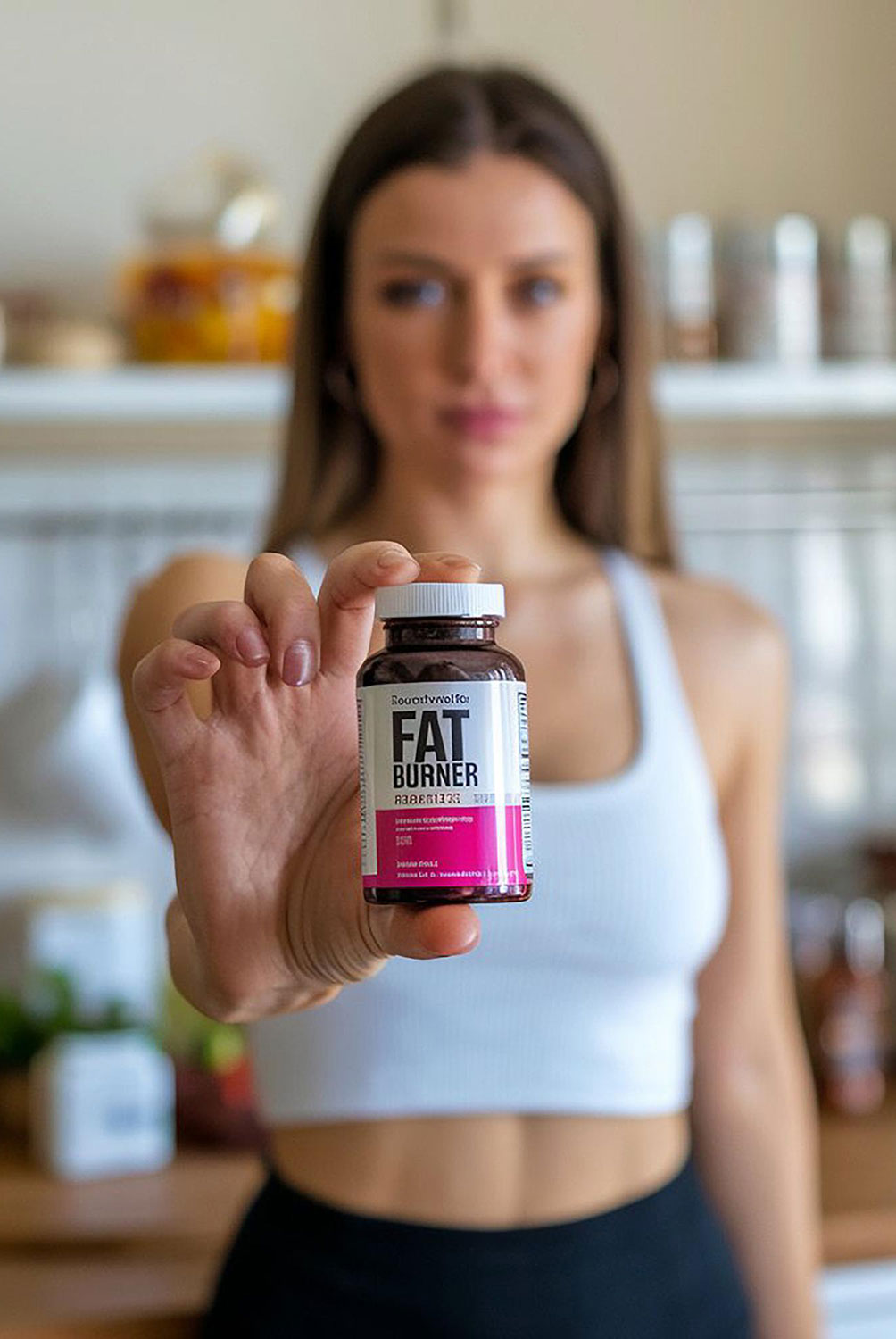The Professional Guide to Sunscreen Sprays

The Professional Guide to Sunscreen Sprays
Table of Contents
Summer. The word itself conjures images of golden beaches, sparkling waters, and endless outdoor adventures. We crave the sun’s warmth on our skin, the Vitamin D boost, and that healthy, sun kissed glow. But amidst the allure of sunny days lies a crucial responsibility: protecting our skin from the sun’s powerful and potentially harmful ultraviolet (UV) rays. Unprotected sun exposure isn’t just about painful sunburns; it’s a fast track to premature aging think wrinkles, sunspots, and loss of elasticity and more seriously, an increased risk of skin cancer.
Enter sunscreen, our non-negotiable ally in the fight against UV damage. While lotions and creams have long been staples, sunscreen sprays have surged in popularity, promising convenient, quick, and often lighter feeling protection. They seem like the perfect solution for on the go application, squirmy kids, and those hard to reach spots. But are all sunscreen sprays created equal? And more importantly, are you using them correctly to get the full protective benefits you expect?
The truth is, the world of sunscreen sprays can be a little misty. Concerns about even coverage, inhalation risks, and choosing the right product from a dizzying array of options are valid. This comprehensive guide is here to clear the air. We’re about to embark on a deep dive into everything you need to know about sunscreen sprays.
We’ll unveil the secrets to choosing the absolute best sunscreen sprays tailored to your needs, demystify application techniques for genuinely effective protection, and highlight top tier products from trusted brands that deliver on their promises. Get ready to transform your sun care routine from a chore into a confident, effective ritual. Let’s ensure your skin stays healthy, radiant, and beautifully protected, allowing you to soak up the joy of the outdoors, worry-free. This isn’t just an article; it’s your passport to a “stormy” summer, full of life and safe from the sizzle!
Why Choose a Sunscreen Spray? The Pros, Cons, and Crucial Precautions
Sunscreen sprays have undoubtedly revolutionized how many of us approach sun protection. Their appeal is undeniable, but like any product, they come with a set of advantages and potential drawbacks. Understanding these is key to making an informed choice and using them safely and effectively.
Advantages of Sunscreen Sprays
- Unmatched Convenience: This is the star attraction. Sprays offer a quick and seemingly effortless application, especially when you’re trying to cover large areas of the body or reapply on the go.
- Hard to reach Hero: Ever struggled to get lotion on your own back? Sprays make covering areas like the back, shoulders, and back of legs significantly easier.
- Kid friendly (Sometimes!): For parents of wriggly children who despise holding still for traditional lotion application, a quick spray can feel like a lifesaver. The cooling sensation can also be more pleasant for some kids.
- Lightweight Feel: Many spray sunscreens have a finer, less greasy texture than heavy creams or lotions, which can be particularly appealing for those with oily skin or in humid climates. They often dry quickly, leaving a comfortable, barely-there feel.
- Good for Hairy Areas: Sprays can be easier to apply evenly over hairy areas like men’s chests, legs, or scalps (for thinning hair) without leaving a white, pasty residue.
Potential Drawbacks and Precautions
- The Coverage Conundrum: The biggest challenge with sprays is achieving adequate and even coverage. It’s easy to miss spots or not apply enough product, especially on a windy day. The fine mist can disperse before it even hits your skin.
- Inhalation Risk: This is a significant concern, particularly with aerosol sprays. Intentionally or unintentionally inhaling sunscreen ingredients is not advisable, especially for individuals with asthma or other respiratory sensitivities, and for children.
- The “Rub It In” Rule Often Forgotten: Many users spray and go, assuming the mist provides a complete shield. However, most dermatologists and manufacturers stress the importance of rubbing the sunscreen in thoroughly after spraying to ensure even distribution and absorption.
- Wind Woes: Applying spray sunscreen on a windy beach can be an exercise in futility, with more product likely nourishing the sand than your skin.
- Flammability (Aerosols): Aerosol sprays contain flammable propellants. Never apply them near an open flame, sparks, or while smoking, and ensure the product is completely dry before going near any heat source.
- Environmental Concerns: Some aerosol propellants and chemical UV filters can have negative environmental impacts, including on coral reefs.
The Bottom Line: Sunscreen sprays can be an excellent tool in your sun protection arsenal when chosen wisely and used correctly. The key is to maximize their benefits while mitigating the risks through proper application techniques.
Decoding Sun Protection: SPF, Broad Spectrum, and Why They Matter
Before we dive into application and product recommendations, let’s quickly refresh our understanding of the language on sunscreen labels. Knowing what SPF and “Broad Spectrum” mean is fundamental to choosing a product that offers genuine protection.
- SPF (Sun Protection Factor): Your UVB ShieldSPF primarily measures a sunscreen’s ability to protect your skin from UVB rays. These are the rays that cause sunburn and play a significant role in developing skin cancer. The SPF number indicates how much longer it would theoretically take for your skin to redden with the sunscreen on compared to without it. For example, if you normally burn in 10 minutes, an SPF 30 sunscreen should provide 30 times that protection (300 minutes). However, this is a laboratory measure. Real-world factors like sweat, water, and incomplete application reduce effectiveness.
- SPF 15: Blocks approximately 93% of UVB rays.
- SPF 30: Blocks approximately 97% of UVB rays.
- SPF 50: Blocks approximately 98% of UVB rays.
- SPF 100: Blocks approximately 99% of UVB rays. As you can see, the increase in protection becomes marginal above SPF 50. Most dermatologists recommend using an SPF of at least 30. Higher SPFs can offer a greater margin of error if you don’t apply enough, but no sunscreen blocks 100% of UVB rays.
- Broad Spectrum: The UVA & UVB GuardianThis is a critical term to look for on any sunscreen label. “Broad Spectrum” means the sunscreen protects against both UVB and UVA rays.
- UVA Rays: These rays penetrate deeper into the skin than UVB rays. They are the primary culprits behind premature skin aging (wrinkles, leathery skin, sunspots) and also contribute to skin cancer development. UVA rays are present year-round, even on cloudy days, and can penetrate glass. If your sunscreen isn’t broad spectrum, you’re only getting part of the protection you need.
- PA+ Rating (More Common in Asian and Some European Brands):The PA+ system, often seen on Japanese and Korean sunscreens, specifically measures UVA protection. It’s denoted by PA+, PA++, PA+++, or PA++++, with more plus signs indicating higher UVA protection. While not standard on all US products, some brands are starting to include it or similar UVA-specific indicators.
Why This Matters for Sprays:
When choosing a sunscreen spray, ensuring it’s Broad Spectrum and has an SPF of 30 or higher is paramount. Given the potential for uneven application with sprays, starting with a robust product is your first line of defense. Don’t be swayed by convenience alone; check the protection credentials first.
How to Use Sunscreen Spray Correctly for Invincible Protection
Using a sunscreen spray might seem as simple as point-and-shoot, but to get the actual SPF and broad-spectrum protection advertised on the bottle, there’s a definite technique involved. Skimping on application or doing it haphazardly is like inviting sun damage. Let’s break down the steps to becoming a sunscreen spray pro.
1. Preparation is Key:
- Shake It Up: Just like a good salad dressing, sunscreen ingredients can separate. Shake the can or bottle vigorously before every use to ensure an even distribution of protective filters. This is especially crucial for mineral sunscreen sprays.
- Location, Location, Location: Avoid windy areas. If you’re outdoors, try to find a sheltered spot or shield your body as you spray. This prevents the product from blowing away and ensures more of it lands on your skin.
- Skin Check: Apply sunscreen to clean, dry skin, ideally 15-20 minutes before sun exposure. This gives the sunscreen time to bind to your skin and form a protective film.
2. The Art of Application: Generosity and Thoroughness
- Hold It Close (But Not Too Close): For aerosol sprays, hold the nozzle about 4-6 inches (10-15 cm) from your skin. If you hold it too far away, the mist disperses too much. If too close, you’ll get a concentrated, wet spot. For non-aerosol pump sprays, the distance might vary slightly based on the spray pattern.
- Spray Generously – Don’t Be Shy! This is where most people go wrong. To achieve the labeled SPF, you need to apply a substantial amount.
- Visual Cue: Spray until an even, visible sheen appears on the skin. Don’t just do a quick, light misting. For each limb or area (e.g., an arm, a leg, chest, back), you should be spraying for several seconds.
- The “One Pass Is Not Enough” Rule: For larger areas, spray back and forth slowly and evenly. One quick pass won’t cut it.
- The Golden Rule: RUB IT IN! This is arguably the most crucial and often-skipped step with sprays. After spraying an area, thoroughly rub the sunscreen into your skin with your hands. This ensures:
- Even Coverage: It spreads the product to fill in any gaps missed by the spray pattern.
- Proper Absorption: It helps the sunscreen adhere better to the skin. Think of the spray as a convenient way to get the product onto your skin, but the rubbing is what guarantees uniform protection.
3. Face Facts: Handle with Care
- Never Spray Directly Onto Your Face: This is a major no-no. Spraying directly onto your face can lead to:
- Inhalation: You’ll breathe in sunscreen particles, which can irritate your lungs.
- Eye Irritation: Getting sunscreen in your eyes is painful and can cause significant irritation.
- Uneven Coverage: It’s very difficult to cover your face evenly and avoid sensitive areas like eyes and lips by direct spraying.
- The Safe Way for Facial Application:
- Spray a generous amount of the sunscreen onto your palms.
- Rub your hands together.
- Apply it to your face like you would a lotion, being careful to avoid the eye area.
- Don’t forget your ears, hairline, and neck!
4. Cover All Bases: Don’t Forget These Spots!
It’s easy to miss certain areas. Pay special attention to:
- Tops of your feet
- Backs of your hands
- Ears (front and back)
- Back of your neck
- Along your hairline
- Behind your knees
- If you have thinning hair, your scalp
5. Reapplication is Non-negotiable:
- The 2-Hour Rule: Reapply sunscreen approximately every two hours, regardless of the SPF.
- After Water or Sweat: Reapply immediately after swimming, toweling off, or heavy sweating, even if the sunscreen is labeled “water-resistant.” Water resistance has its limits (usually 40 or 80 minutes).
- Cloudy Days Count: UV rays penetrate clouds, so don’t skip sunscreen just because the sun isn’t shining brightly.
Common Sunscreen Spray Mistakes to Sidestep:
- The “Spray and Pray”: Applying a quick, light mist and not rubbing it in.
- Battling the Breeze: Spraying in windy conditions and losing most of the product.
- Forgetting to Reapply: Thinking one application lasts all day.
- Missing Spots: Leading to a “patchwork” sunburn.
- Inhaling the Mist: Especially by spraying directly onto the face or in enclosed, poorly ventilated areas.
- Relying on It for Infants: Sprays are generally not recommended for babies under 6 months old. Consult a pediatrician; creams and lotions are usually preferred for young children if sunscreen is unavoidable.
By adopting these meticulous application techniques, you’ll transform your sunscreen spray from a hit-or-miss product into a reliable guardian of your skin’s health.
Key Factors for Selecting the Best Sunscreen Spray
Navigating the sunscreen aisle can be overwhelming. With countless brands, formulas, and claims, how do you pick the sunscreen spray that’s truly best for you? Here are the essential factors to consider:
- SPF 30 or Higher & Broad Spectrum Protection:This is non-negotiable. SPF 30 blocks about 97% of UVB rays, and “Broad Spectrum” ensures protection against both UVA and UVB rays. For extended outdoor activities, consider SPF 50 or higher for an added buffer.
Skin Type and Concerns:
- Sensitive Skin: Look for “hypoallergenic,” “fragrance-free,” and mineral sunscreens (zinc oxide, titanium dioxide). Patch test first.
- Oily or Acne-Prone Skin: Opt for “non-comedogenic” and “oil-free” sprays.
- Dry Skin: Choose sprays with moisturizing ingredients like hyaluronic acid, glycerin, or aloe vera.
- Mature Skin: Look for sprays with antioxidants (Vitamin E or C).
Active Ingredients: Mineral vs. Chemical:
- Mineral Sunscreens (Physical Blockers): Zinc Oxide and/or Titanium Dioxide. Gentler, work immediately. Can leave a white cast if not rubbed in well.
- Chemical Sunscreens (Chemical Absorbers): Oxybenzone, Avobenzone, etc. Lighter texture, absorb UV rays. Need 15-20 minutes to be effective. Some have environmental concerns.
- Water Resistance:Choose “water-resistant” (40 or 80 minutes) if swimming or sweating. Reapply after water exposure.
- Added Beneficial Ingredients:Antioxidants (Vitamins C, E), moisturizers, and soothing agents like chamomile can enhance skin benefits.
- Avoidance List (Potentially):Fragrance, dyes, high alcohol content (if drying for you), Oxybenzone, and Octinoxate (if concerned about reef safety or potential hormone disruption).
- Brand Reputation and Reviews:Look for reputable, dermatologist-tested brands. User reviews can offer insights but remember individual experiences vary. Always perform a patch test with a new sunscreen, especially if you have sensitive skin. Apply a small amount to an inconspicuous area (like your inner arm) and wait 24-48 hours to check for any reaction.
Top Sunscreen Spray Recommendations for Every Need
Here is a curated list of some of the best sunscreen sprays on the market, selected based on their protective qualities, ingredients, suitability for different skin types, user reviews, and brand reputation.
1. Best Overall Performance: La Roche-Posay Anthelios Ultra Light Sunscreen Lotion Spray SPF 60
- Why It’s a Winner: Renowned for advanced sun protection, this spray offers high SPF, broad-spectrum coverage, and a lightweight, non-greasy feel.
- Key Features: SPF 60 with Cell-Ox Shield® technology (Broad Spectrum UVA/UVB protection + antioxidants), fast-absorbing, water-resistant (80 minutes), oil-free, fragrance-free, paraben-free.
- Pros: Excellent protection, sinks in quickly, great for all skin types including sensitive.
- Cons: Premium pricing.
- Best For: Anyone seeking top-tier, reliable sun protection. Ideal for sensitive skin.
- Humanized Touch: Confident protection that feels barely there.
2. Best for Active Lifestyles & Families: Neutrogena Beach Defense Water + Sun Protection Sunscreen Spray SPF 70
- Why It’s a Winner: Formulated for sun and water, offering robust protection for the whole family during outdoor activities.
- Key Features: SPF 70 with Helioplex® Technology (Broad Spectrum UVA/UVB protection), water-resistant (80 minutes), lightweight, fast-absorbing, oil-free.
- Pros: Very high SPF, stands up to water and sweat, pleasant beachy scent (fragrance-free often available), affordable.
- Cons: Contains chemical filters like oxybenzone (check label if concerned). Scent can be strong for some.
- Best For: Beachgoers, swimmers, athletes, families needing reliable, high-SPF, water-resistant option.
- Humanized Touch: Powerfully protected skin for tenacious playtime.
3. Best Mineral Sunscreen Spray: Sun Bum Mineral SPF 50 Sunscreen Spray
- Why It’s a Winner: An effective, gentle, and eco-conscious mineral option great for sensitive skin.
- Key Features: SPF 50 Broad Spectrum UVA/UVB protection, Active Ingredient: Zinc Oxide, water-resistant (80 minutes), hypoallergenic, fragrance-free, dye-free, cruelty-free, vegan, Reef Friendly.
- Pros: Gentle mineral formula, rubs in relatively well, environmentally conscious.
- Cons: Mineral sprays can leave a slight white cast if not rubbed in meticulously.
- Best For: Sensitive skin, eczema, physical blocker preference, eco-conscious consumers.
- Humanized Touch: Kind to your skin and the planet.
4. Best Luxury/Antioxidant-Rich Spray: Supergoop! PLAY Antioxidant Body Mist SPF 50 with Vitamin C
- Why It’s a Winner: More than sun protection, it’s skincare with antioxidants to fight free radicals.
- Key Features: SPF 50 Broad Spectrum protection, infused with Vitamin C and green tea extract, water and sweat-resistant (80 minutes), non-aerosol spray, reef-friendly.
- Pros: Incredibly lightweight, non-greasy, provides antioxidant benefits, fine mist.
- Cons: Higher price point.
- Best For: Skincare enthusiasts wanting added benefits, luxurious feel, non-aerosol preference.
- Humanized Touch: A protective, vitamin-rich cocktail for your skin.
5. Best Budget-Friendly Workhorse: Coppertone Sport Sunscreen Spray SPF 50
- Why It’s a Winner: A trusted, affordable, and reliable option for everyday activity and strong sun.
- Key Features: SPF 50 Broad Spectrum UVA/UVB protection, water-resistant (80 minutes), stays on strong when you sweat, moisturizing formula.
- Pros: Affordable, accessible, robust protection for active use, continuous spray.
- Cons: Typically uses chemical filters (check label if oxybenzone is a concern). Traditional “sunscreen-y” scent.
- Best For: Budget-conscious individuals needing dependable sunscreen for sports and general outdoor activities.
- Humanized Touch: Your trusty companion for every sunny adventure.
6. Best for Sensitive Skin (Drugstore Pick): Banana Boat Sensitive Mineral Enriched Sunscreen Spray SPF 50+
- Why It’s a Winner: An accessible mineral-enriched option formulated for sensitive skin.
- Key Features: SPF 50+ Broad Spectrum UVA/UVB protection, made with naturally sourced zinc, hypoallergenic, fragrance-free, dye-free, water-resistant (80 minutes), pediatrician tested.
- Pros: Gentle, often more affordable than other dedicated mineral sprays, good water resistance.
- Cons: “Mineral enriched” might also contain some chemical filters (check ingredients). Requires thorough rubbing.
- Best For: Families with sensitive skin members, those seeking a gentler drugstore option.
- Humanized Touch: Relief for those struggling with sunscreens that irritate delicate skin.
Special Considerations for Sunscreen Sprays
Certain situations and users call for more nuance in sunscreen spray selection and application.
- Sunscreen Sprays for Children:Use mineral-based sprays (zinc oxide, titanium dioxide) for children over 6 months. Never spray directly onto a child’s face; spray on your hands first, then apply. Apply in well-ventilated areas to avoid inhalation. Look for products formulated for children, like Thinkbaby/Thinksport Kids Mineral Sunscreen Spray or Sun Bum Mineral for Kids.
- Sunscreen Sprays and Your Face:Direct facial spraying is not recommended due to inhalation and eye irritation risks. Spray product onto hands, then apply to face, or use a dedicated facial sunscreen lotion/stick.
- Environmental Impact & “Reef-Safe” Sprays:To protect marine ecosystems, choose “reef-safe” or “reef-friendly” sunscreens, generally free from Oxybenzone and Octinoxate. Mineral sunscreens with non-nano zinc oxide/titanium dioxide are often preferred. Non-aerosol sprays might have a smaller environmental footprint.
- The Flammability Factor (Aerosols):Aerosol sunscreens are flammable. Do not use or store near open flames or heat sources. Ensure sunscreen is completely dry on skin before exposure to ignition sources.
A Holistic Approach to Sun Safety
Effective sun protection involves more than just sunscreen:
- Seek Shade: Especially between 10 a.m. and 4 p.m. when UV rays are strongest.
- Dress for Success: Wear tightly woven, dark-colored clothing. Long sleeves and pants offer more coverage. Consider UPF-rated garments (UPF 30+).
- Hats On!: A wide-brimmed hat (at least 3-inch brim) protects your face, ears, scalp, and neck.
- Sunglasses are Non-negotiable: Choose sunglasses blocking 99-100% of UVA and UVB rays. Wraparound styles are best.
- Be Mindful of Reflective Surfaces: Water, sand, snow, and concrete reflect UV rays, increasing exposure.
- Year-round Vigilance: UV radiation is present all year. Make sun protection a daily habit.
Conclusion: Your Radiant Future, Protected
The journey to truly effective sun protection with sprays is one of knowledge and consistent action. You’re now equipped to select the best sunscreen spray that aligns with your skin’s needs, your lifestyle, and your values.
Remember, the most effective sunscreen is the one you’ll use generously and correctly, every single time. Shake well, spray liberally, rub it in thoroughly, and reapply diligently. Embrace the power of these products to guard your skin’s health and radiance.
Make sun safety an integral part of your daily routine. Your skin is your largest organ; protect it fiercely. Go forth, enjoy the sunshine responsibly, and shine on, safely and spectacularly!
Frequently Asked Questions (FAQ)
- Q1: Are sunscreen sprays as effective as lotions?A1: Sunscreen sprays can be just as effective as lotions if applied correctly and generously. The main challenge with sprays is achieving even coverage and using enough product. Lotions often make it easier to see where you’ve applied them and to ensure you’re using an adequate amount. However, if you follow the proper application technique for sprays (spraying generously until there’s a visible sheen, then rubbing it in thoroughly), they provide the labeled SPF protection. For many, the convenience of sprays means they are more likely to use them, which can lead to better overall protection if it encourages consistent application.
- Q2: How much sunscreen spray is “enough”?A2: This is a critical question, as under-application drastically reduces effectiveness. For sprays, you need to apply a liberal amount.
- Visual Guide: Spray each area of the body (e.g., one arm, one leg, chest, back) until an even, visible sheen appears on the skin. Don’t just do a quick, light misting. This usually takes several seconds of continuous spraying per area.
- Rub It In: After spraying, rub the product thoroughly into the skin to ensure even coverage and no missed spots. If you’re not rubbing it in, you’re likely not getting full protection.
- General Guideline (though harder to measure with sprays): The standard recommendation for lotions is about one ounce (a shot glass full) to cover the entire adult body. While it’s difficult to translate this directly to sprays, the goal is to achieve a similar coating. This means a typical aerosol can might only last for a few full-body applications if used correctly.
- Q3: Can I get a sunburn even if I use sunscreen spray?A3: Yes, unfortunately, you can still get a sunburn even when using sunscreen spray. This usually happens for a few common reasons:
- Under-application: Not using enough spray to achieve the labeled SPF.
- Missed Spots: Spraying unevenly and not rubbing it in can leave areas exposed.
- Not Reapplying: Sunscreen wears off. It needs to be reapplied at least every two hours, and more frequently after swimming, sweating, or towel drying.
- Expired Sunscreen: Sunscreen loses its effectiveness over time. Check the expiration date.
- Very High UV Index: On days with extreme UV levels, or for very sun-sensitive individuals, even high SPF sunscreen might not prevent all redness if sun exposure is prolonged. Sunscreen is one part of sun safety; also seek shade and wear protective clothing.
- Incorrect Product Choice: Using a low SPF or a non-broad-spectrum product.
- Q4: Are sunscreen sprays safe to inhale? What are the risks?A4: No, sunscreen sprays are not intended to be inhaled, and doing so can pose risks.
- Risks: Inhaling the ingredients in sunscreen sprays, especially aerosols, can irritate the respiratory tract and lungs. This is a particular concern for individuals with asthma or other respiratory conditions, as well as for children. While occasional, accidental light inhalation in an open space might not cause major issues for most healthy adults, frequent or concentrated inhalation should be avoided.
- Precautions:
- Never spray sunscreen directly onto your face or near your mouth/nose. Spray it onto your hands first, then apply to the face.
- Apply in well-ventilated areas, preferably outdoors.
- Avoid spraying on very windy days where the mist can easily be blown into your (or others’) breathing zone.
- Hold your breath briefly during application if you’re concerned, or turn your face away.
- Be especially careful when applying to children.
- Q5: What’s the real difference between mineral and chemical sunscreen sprays?A5: The primary difference lies in their active ingredients and how they protect your skin:
- Mineral Sunscreens (Physical Blockers):
- Active Ingredients: Typically Zinc Oxide and/or Titanium Dioxide.
- How They Work: These minerals create a physical barrier on the surface of the skin that sits on top and blocks or scatters UV rays, like tiny mirrors.
- Pros: Generally considered gentler and less likely to irritate sensitive skin. Start working immediately upon application. Zinc oxide provides excellent broad-spectrum protection. Often preferred for children and those with skin conditions like rosacea or eczema.
- Cons: Can sometimes feel thicker or leave a white cast, especially older formulations or if not rubbed in well (though newer micronized versions are much improved). For sprays, ensuring an even dispersion of mineral particles can be challenging.
- Chemical Sunscreens (Chemical Absorbers):
- Active Ingredients: Include one or more chemicals like Oxybenzone, Avobenzone, Octinoxate, Octisalate, Homosalate.
- How They Work: These chemicals absorb into the skin and then absorb UV radiation, convert it into heat, and release it from the body.
- Pros: Tend to be lighter in texture, spread more easily, and appear clear on the skin. Often preferred for their cosmetic elegance in spray formulations.
- Cons: Need about 15-20 minutes after application to become fully effective. Can cause skin irritation or allergic reactions in some individuals. Some chemical filters (like oxybenzone and octinoxate) have raised concerns about potential hormone disruption (though regulatory bodies generally consider them safe at current concentrations) and negative impacts on coral reefs.
- Mineral Sunscreens (Physical Blockers):
- Q6: How often should I replace my sunscreen spray? Does it expire?A6: Yes, sunscreen spray does expire, and it’s important to replace it to ensure it’s effective.
- Check the Expiration Date: All sunscreens sold in many regions (like the U.S.) are required to have an expiration date printed on the packaging. Always check this date before use.
- If No Date: If there’s no expiration date, the general rule is that sunscreen is formulated to remain effective for up to three years from its manufacture date. However, this assumes it’s stored properly.
- Storage Matters: Exposure to heat and direct sunlight can degrade sunscreen ingredients faster. Avoid leaving your sunscreen spray in a hot car for extended periods. Store it in a cool, dark place when possible.
- Signs of Degradation: Even if it’s within its expiration date, discard sunscreen if you notice any significant changes in its consistency (e.g., it becomes watery, gritty, or separates), color, or odor. For sprays, if the nozzle clogs persistently or the spray pattern is very uneven, the product might be compromised.
- When in Doubt, Throw It Out: If you’re unsure about its age or condition, it’s safer to replace it. Using expired or degraded sunscreen won’t provide adequate protection.
Are sunscreen sprays as effective as lotions?
Sunscreen sprays can be just as effective as lotions if applied correctly and generously. The main challenge with sprays is achieving even coverage and using enough product. Lotions often make it easier to see where you've applied them and to ensure you're using an adequate amount.
However, if you follow the proper application technique for sprays (spraying generously until there's a visible sheen, then rubbing it in thoroughly), they provide the labeled SPF protection. For many, the convenience of sprays means they are more likely to use them, which can lead to better overall protection if it encourages consistent application.
How much sunscreen spray is "enough"?
- This is a critical question, as under-application drastically reduces effectiveness. For sprays, you need to apply a liberal amount.
- Visual Guide: Spray each area of the body (e.g., one arm, one leg, chest, back) until an even, visible sheen appears on the skin. Don't just do a quick, light misting. This usually takes several seconds of continuous spraying per area.
- Rub It In: After spraying, rub the product thoroughly into the skin to ensure even coverage and no missed spots. If you're not rubbing it in, you're likely not getting full protection.
- General Guideline (though harder to measure with sprays): The standard recommendation for lotions is about one ounce (a shot glass full) to cover the entire adult body. While it's difficult to translate this directly to sprays, the goal is to achieve a similar coating. This means a typical aerosol can might only last for a few full-body applications if used correctly.
Can I get a sunburn even if I use sunscreen spray?
- Yes, unfortunately, you can still get a sunburn even when using sunscreen spray. This usually happens for a few common reasons:
- Under-application: Not using enough spray to achieve the labeled SPF.
- Missed Spots: Spraying unevenly and not rubbing it in can leave areas exposed.
- Not Reapplying: Sunscreen wears off. It needs to be reapplied at least every two hours, and more frequently after swimming, sweating, or towel drying.
- Expired Sunscreen: Sunscreen loses its effectiveness over time. Check the expiration date.
- Very High UV Index: On days with extreme UV levels, or for very sun-sensitive individuals, even high SPF sunscreen might not prevent all redness if sun exposure is prolonged. Sunscreen is one part of sun safety; also seek shade and wear protective clothing.
- Incorrect Product Choice: Using a low SPF or a non-broad-spectrum product.
Are sunscreen sprays safe to inhale? What are the risks?
- No, sunscreen sprays are not intended to be inhaled, and doing so can pose risks.
- Risks: Inhaling the ingredients in sunscreen sprays, especially aerosols, can irritate the respiratory tract and lungs. This is a particular concern for individuals with asthma or other respiratory conditions, as well as for children. While occasional, accidental light inhalation in an open space might not cause major issues for most healthy adults, frequent or concentrated inhalation should be avoided.
- Precautions:
- Never spray sunscreen directly onto your face or near your mouth/nose. Spray it onto your hands first, then apply to the face.
- Apply in well-ventilated areas, preferably outdoors.
- Avoid spraying on very windy days where the mist can easily be blown into your (or others') breathing zone.
- Hold your breath briefly during application if you're concerned, or turn your face away.
- Be especially careful when applying to children.
What's the real difference between mineral and chemical sunscreen sprays?
- The primary difference lies in their active ingredients and how they protect your skin:
- Mineral Sunscreens (Physical Blockers):
- Active Ingredients: Typically Zinc Oxide and/or Titanium Dioxide.
- How They Work: These minerals create a physical barrier on the surface of the skin that sits on top and blocks or scatters UV rays, like tiny mirrors.
- Pros: Generally considered gentler and less likely to irritate sensitive skin. Start working immediately upon application. Zinc oxide provides excellent broad-spectrum protection. Often preferred for children and those with skin conditions like rosacea or eczema.
- Cons: Can sometimes feel thicker or leave a white cast, especially older formulations or if not rubbed in well (though newer micronized versions are much improved). For sprays, ensuring an even dispersion of mineral particles can be challenging.
- Chemical Sunscreens (Chemical Absorbers):
- Active Ingredients: Include one or more chemicals like Oxybenzone, Avobenzone, Octinoxate, Octisalate, Homosalate.
- How They Work: These chemicals absorb into the skin and then absorb UV radiation, convert it into heat, and release it from the body.
- Pros: Tend to be lighter in texture, spread more easily, and appear clear on the skin. Often preferred for their cosmetic elegance in spray formulations.
- Cons: Need about 15-20 minutes after application to become fully effective. Can cause skin irritation or allergic reactions in some individuals. Some chemical filters (like oxybenzone and octinoxate) have raised concerns about potential hormone disruption (though regulatory bodies generally consider them safe at current concentrations) and negative impacts on coral reefs.
- Mineral Sunscreens (Physical Blockers):
How often should I replace my sunscreen spray? Does it expire?
- Yes, sunscreen spray does expire, and it's important to replace it to ensure it's effective.
- Check the Expiration Date: All sunscreens sold in many regions (like the U.S.) are required to have an expiration date printed on the packaging. Always check this date before use.
- If No Date: If there's no expiration date, the general rule is that sunscreen is formulated to remain effective for up to three years from its manufacture date. However, this assumes it's stored properly.
- Storage Matters: Exposure to heat and direct sunlight can degrade sunscreen ingredients faster. Avoid leaving your sunscreen spray in a hot car for extended periods. Store it in a cool, dark place when possible.
- Signs of Degradation: Even if it's within its expiration date, discard sunscreen if you notice any significant changes in its consistency (e.g., it becomes watery, gritty, or separates), color, or odor. For sprays, if the nozzle clogs persistently or the spray pattern is very uneven, the product might be compromised.
- When in Doubt, Throw It Out: If you're unsure about its age or condition, it's safer to replace it. Using expired or degraded sunscreen won't provide adequate protection.


